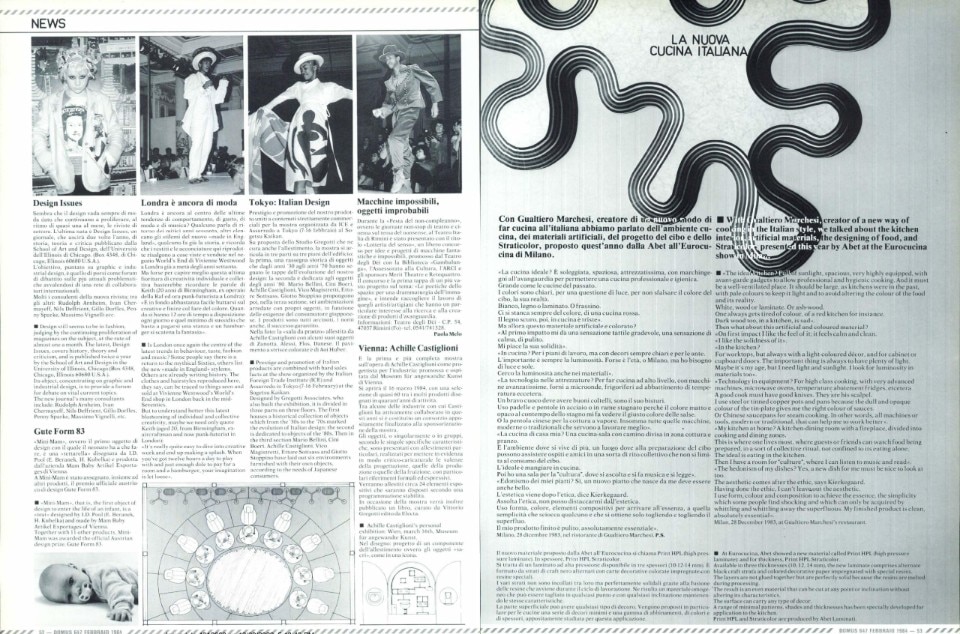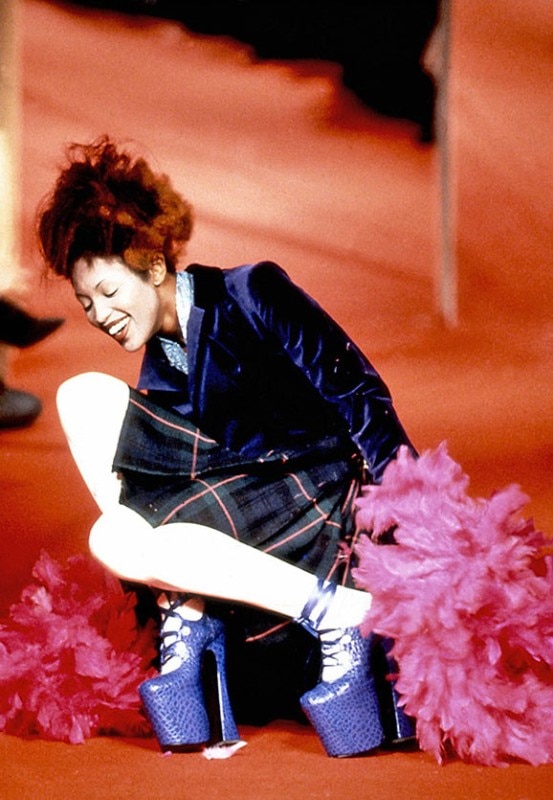Vivienne Westwood walked her last catwalk. The British fashion designer passed away aged 81, in silence and with the same great humbleness and frugality that always defined her life, despite her genius (and sawing machine) giving birth to the most subversive youth movement of the 20th century: punk.
Westwood, in fact, was (together with her former partner and Sex Pistols manager Malcolm McLaren) the demiurge of punk, intended as an attitude to life and aesthetic manifesto. Throughout the 1970s her boutiques in London’s World’s End – the working-class end of the otherwise affluent neighourhood of Chelsea –, from Let It Rock to Too Young To Live Too Fast To Die, from SEX to the fundamental Seditionaries, were responsible for a new and ground-breaking approach to fashion.
A photograph from the summer of ‘77, that of punk, God Save the Queen and of the Silver Jubilee sublimates this concept. A middle-aged man, in a flared suit still screaming 1970s from all of its stitches and Dacron hems, glances puzzled at the shop front of SEX, at its outrageous pink sign and at its employee and Westwood muse Jordan Mooney, dressed in an Atom Age-meets-bondage outfit. A rite of passage and cultural transition in one single frame.

As sociologist Dick Hebdige notes in his seminal essay Subcultures: The Meaning of Style, with Westwood punk affirmed itself as the first post-subculture, with its ability to mirror the progressive fragmentation of western culture to come. Dame Vivienne initiated such a pastiche of cultural and stylistic references synthesised through garments that she cut, shredded and reassembled together as if her sewing machine was moved by an anarchist and situationist urge.
This revolution didn’t come until Westwood was in her 30's, when the life of most people is already set in stone, entangled in the strains of conformist life and its routines. With the art school studies never brought to an end due to financial difficulties, a son and a divorce behind, she reinvented herself as a jewellery designer at the Portobello Road market. There she met the younger and volcanic Malcolm McLaren, with whom she had another baby. Westwood had intention of aborting, but instead she opted to invest the money of the operation in a cashmere jumper. It was McLaren to inform her, with the turmoil of 1968 in full swing, on the notions of situationism, the philosophical theory that only a few years later would inspire her approach to fashion design.
It all began from a deadstock on unsold rock t-shirts which McLaren brought home. Westwood cut and dyed them in her flat’s bathtub, adorned them with zips and chicken bones boiled in her kitchen, and with outrageous prints, including Swastikas and crucified images of Jesus Christ, as well as a plethora of sexual iconographies deemed scabrous for the times. She also started trading surplus latex garments, becoming one of the first designers to make these pieces of clothing accepted within the fashion discourse, and beyond the niche of sexual fetishism alone.
In 1981, with punk fully gentrified and spiritually defunct, the first runway show arrived. Her acclaimed new romantic collection nodded to the style of pirates and was informed by Norah Waugh’s book The Cut of Men’s Clothes. Such a bond with the British sartorial tradition and her will to disrupt it would later return in famous collections, including Witches (FW 1983-84) featuring Keith Haring’s illustrations, the celebration of the tartan of Anglomania (FW 1993-94) and On Liberty (FW 1994-95), as well as her recent support to the environmentalist struggle with 2021 Climate Revolution. Not to forget her work with Harry’s Tweed, whose orb logo, symbol of the British Crown, has remained part of the Westwood legacy.

After all, despite the iconoclast spirit, Dame Vivienne has imposed herself as a national treasure and popular icon par eccellence, thanks to her very much British ability of balancing heritage and dissacration, like the safety pin studded effigy of Queen Elizabeth II that equally defined the season of punk and of the Silver Jubilee in the summer of ‘77.
It now seems more than a twist of fate that the two queens of England, the orthodox and the unhortodox one, passed away only a few months apart, as to mark the end of an era for the United Kingdom and our pop culture. When in 1992 the two met for Westwood’s OBE ceremony, the designer wore an impeccable and far-from-punk grey suit, only to later reveal she wore no knickers.
Punk is dead, at last.

Opening image: Naomi Campbell on the catwalk for Vivienne Westwood Fall-Winter 1993-94 Anglomania collection. Photo courtesy Vivienne Westwood.

Design at the service of water
Combining minimalist design and innovation, Rubinetterie Treemme's W-Smart and W-Touch solutions are at the forefront of the industry, offering precise and intuitive water control.


